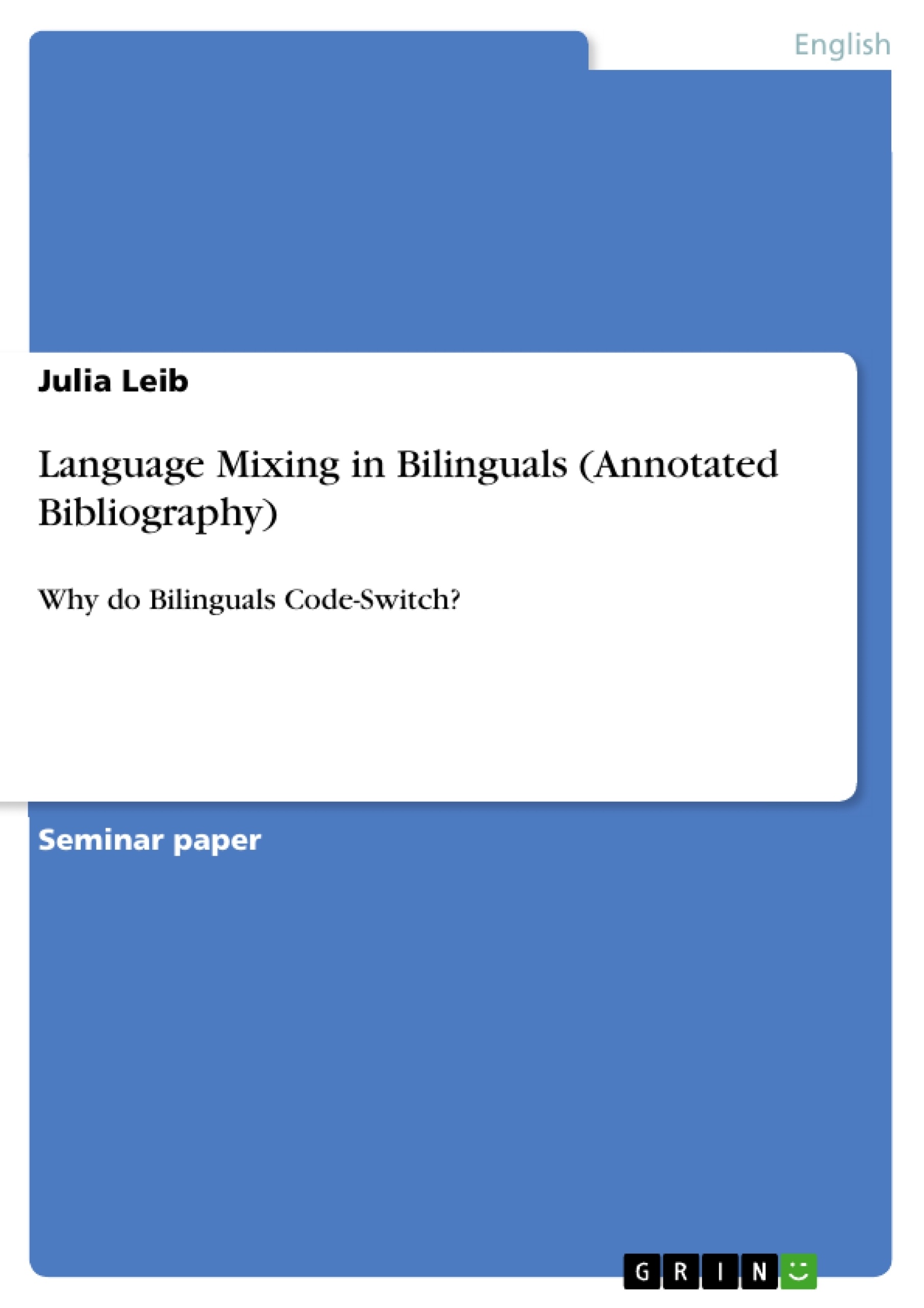In today’s globalized world bilingualism, defined as the regular use of two or more languages, is a widespread phenomenon and has become nearly the standard and monolingualism the exception. Consequently linguists have become more and more interested in this topic and in the last decades much has been published regarding bilinguals and their language behavior.
Being able to manage two different languages or dialects, bilinguals are capable to code-switch within their languages. Code-Switching (in the following referred to as CS) occurs when a word or a phrase in one language substitutes for a word or phrase in a second language.
“Code switching is the alternate use of two (or more) languages within the same utterance, as illustrated in (1) (Belazi, Rubin, and Toribio, 1994).
(1a) This morning mi hermano y yo fuimos a comprar some milk.
This morning my brother and I went to buy some milk.
(1b) The student brought the homework para la profesora.
The student brought the homework for the teacher.”
CS follows functional and grammatical principles and is a complex, rule-governed phenomenon. Bilingual speakers often code-switch from one language to another, especially when both languages are used in the environment. This is mostly the case in multilingual communities.
Although much has already been written on how bilinguals organize their two languages, little is known about why bilinguals mix their two languages during communicative process. It would be easier for them just to stay in one language while communicating, being understood by everyone. Nevertheless they switch codes during conversations. This raises the question: Why do bilinguals code-switch?
The aim of this annotated bibliography is to shed some light onto this discussion by presenting both actual and back dating research efforts. Within the vast research area of bilingualism and CS it is not easy to find clear and satisfying answers. The papers selected try to cover a wide range of different approaches, including two leading and often quoted articles by Myers-Scotton, in order to point out the diverse points of view regarding the topic under discussion. In the end this should lead to first answers to the question why bilinguals code-switch, paving therewith the way for further research.
Inhaltsverzeichnis (Table of Contents)
- Introduction
- Annotated Bibliography
- David, A. & Wei, L. (2004). To what extent is codeswitching dependent on a bilingual child's lexical development?. Sociolinguistica, 18, 1-12.
- Dussias, P. E. (2001). Psycholinguistic complexity in codeswitching. International Journal of Bilingualism, 5 (1), 87-100.
- Ervin-Tripp, S. & Reyes, I. (2005). Child codeswitching and adult content contrasts. International Journal of Bilingualism, 9 (1), 85-102.
- Franceschini, R., Behrent, S., Krick, C. & Reith, W. (2004). Zur Neurobiologie des Codeswitching. Sociolinguistica, 18, 118-138.
- Grosjean, F. & Miller, J. L. (1994). Going in and out of Languages: An Example of Bilingual Flexibility. Psychological Science, 5 (4), 201-206.
Zielsetzung und Themenschwerpunkte (Objectives and Key Themes)
This annotated bibliography aims to explore the phenomenon of code-switching (CS) in bilinguals by examining existing research. The focus is on understanding why bilinguals mix languages during communication, considering the various factors and contexts involved. The bibliography aims to present a diverse range of perspectives on this complex topic.- The role of lexical development in CS
- The influence of functional elements on CS
- The relationship between child CS and adult language use
- The neurobiological processes involved in CS
- The linguistic and phonetic flexibility of bilinguals during CS
Zusammenfassung der Kapitel (Chapter Summaries)
The Introduction establishes the relevance of bilingualism in a globalized world and introduces the phenomenon of CS, outlining its functional and grammatical nature. It poses the research question of why bilinguals engage in CS, highlighting the importance of exploring this question in the context of communication. The Annotated Bibliography section presents summaries of key research articles on bilingualism and CS. David and Wei explore the development of CS in young bilingual children, suggesting that CS emerges early and is connected to lexical development. Dussias investigates the impact of functional elements on CS comprehension. Ervin-Tripp and Reyes link child CS with adult language use, emphasizing the pragmatic functions of CS. Franceschini et al. investigate the neurobiological processes involved in CS, shedding light on brain activity during language switching. Grosjean and Miller examine the linguistic and phonetic flexibility of bilinguals during CS, revealing a complete and immediate shift between languages.Schlüsselwörter (Keywords)
Bilingualism, code-switching, language mixing, lexical development, functional elements, child language acquisition, neurobiology, linguistic flexibility, communication, pragmatic functions.- Quote paper
- Julia Leib (Author), 2010, Language Mixing in Bilinguals (Annotated Bibliography), Munich, GRIN Verlag, https://www.grin.com/document/171517



